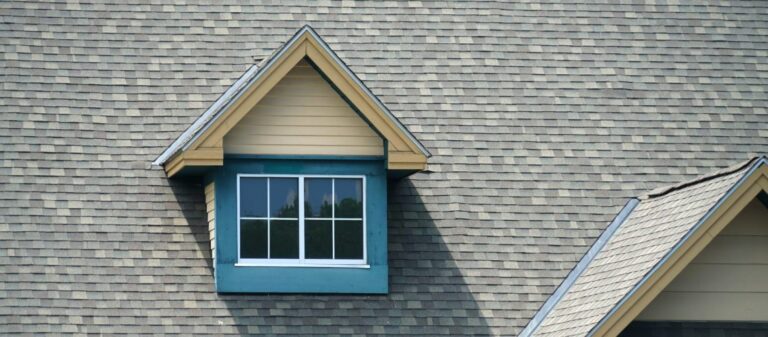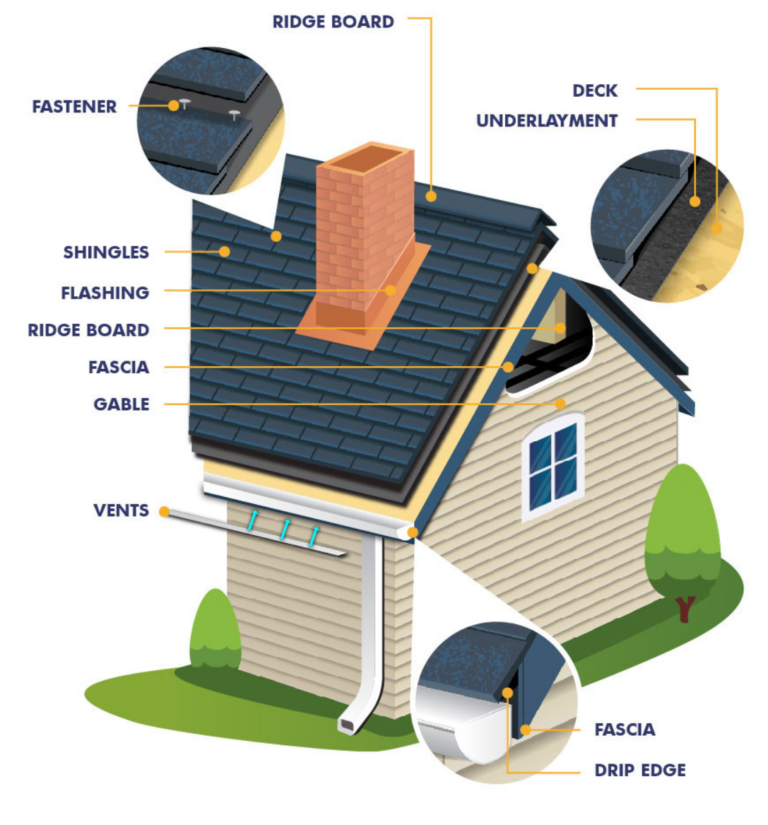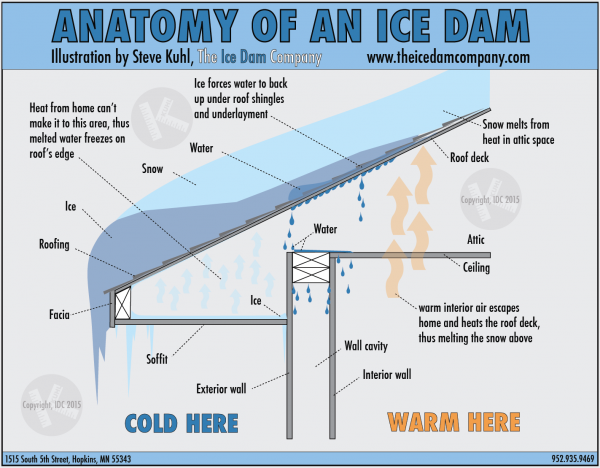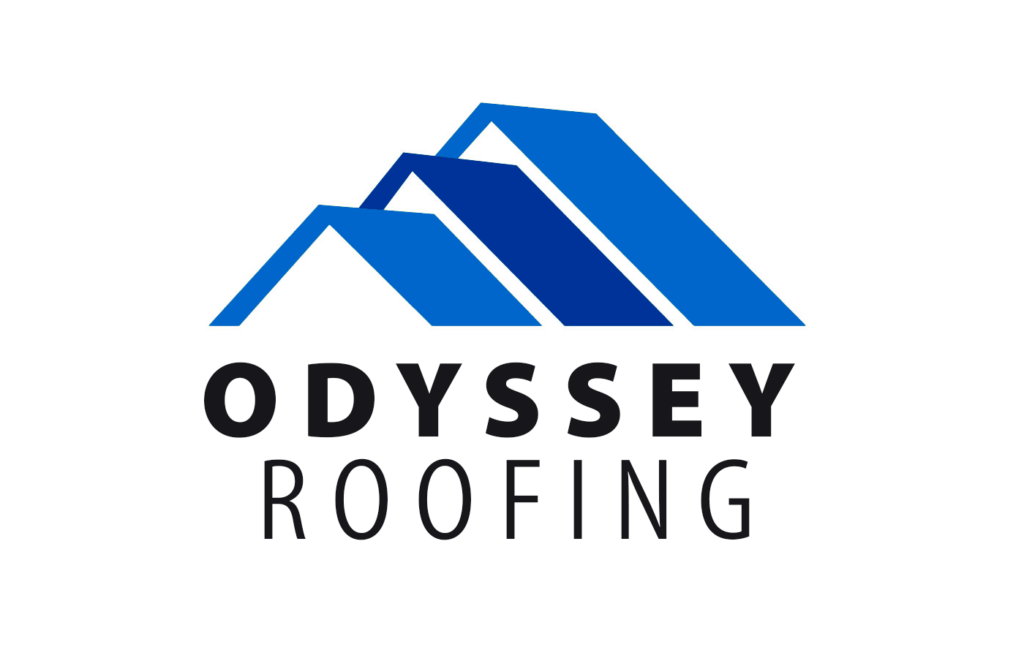The Five Types of Hidden Roof Damage

When it comes to protecting your home, your roof is doing a large amount of the heavy lifting. Not only is your roof protecting the possessions inside your home but it is also stopping the elements from affecting the structural framing that supports your home. It is extremely important for homeowners to do everything they can to make sure their roof remains in good condition.
In many instances, however, roofs and roof decking take on damage without homeowners even realizing it. While water coming into your home can be an obvious sign that your roof is damaged, there are quite a few not-so-obvious issues that could either indicate an immediate issue with your roof or be the catalyst for a major issue in the future. Odyssey Roofing, a top-rated residential roofing company in Naperville, Il, will briefly discuss five not-so-obvious issues to look out for that may be damaging your roof without you realizing it.

Intake and Outtake Ventilation
One of the most overlooked aspects of keeping your roof in good condition is attic ventilation. Whether it is the hot, humid Naperville summer or the blistering cold Naperville winter, your roof has to breathe. Improper roof ventilation can lead to moisture and mold growth inside your attic, which can eat away at the roof decking and, in extreme cases, the rafters and trusses that make up the structural support of your roofing system. There are two bases to cover to ensure that your roof is properly ventilated – our first two most overlooked items that damage your roof – which are your attic intake and outtake. The two work together to create a constant flow of fresh air through the attic space, which not only improves air quality but prevents the buildup of moisture and mold. Proper roof ventilation also allows the your shingles to breath so as not to get “burnt up” and start curling.
Intake Ventilation
Intake ventilation comes in two forms for modern roofing, soffit ventilation and smart (or hidden) shingle vents. Soffit ventilation is by far the most common in the Naperville area, and consists of ventilating the attic space of a building by installing vents in the soffit (the undersides of eaves). Typically, soffit venting consists of leaving the soffit line open – or putting holes in existing wood soffit – and covering it with vinyl or aluminum for a more aesthetically pleasing look. Smart vents, or hidden vents under roofing shingles, are less common and are made for homes that do not have eaves or overhangs. These vents are installed under the roof shingles and are designed to blend in with the roof.
Both types of intake allow outside air to enter the attic space and help to remove hot, humid air, which can reduce the risk of moisture damage and improve the overall energy efficiency of your home. This also reduces the risk of moisture damage and keeps the attic space of your roof cool and dry, preventing ice damming on the eaves of your roof from getting out of control in the winter months. The amount of vents will depend on the size and shape of your roof.
Outtake Ventilation
Outtake ventilation is what removes hot, humid air from your home through your roof. Outtake ventilation is used in conjunction with intake ventilation, which brings in fresh, cooler air to the space – and it is very important for the lifespan of your roof that it is balanced with the intake ventilation as to not pull too much.
Older methods of outtake ventilation included “turtle” or “low profile” vents along the top of roofs or large electrical exhaust fans. A more modern method of outtake to consider when getting your roof replacement – and by far the most efficient – is a ridge vent. A ridge vent is a type of roof ventilation system that is installed along the peak or ridge of a roof. The vent consists of a continuous slot or series of holes along the ridge, covered by a weatherproof material. Ridge vents are a passive ventilation system, which means that they do not require any electricity or mechanical parts to operate. They rely on the natural flow of air caused by the temperature difference between the attic and the outside air. There are some instances, however, where homes do not have enough ridge for ridge vents to provide enough outtake ventilation – such as very pronounced hip roofs – and in these cases it is necessary to install an attic fan to supplement the ridge vent.
If you suspect your roof may not be properly ventilated, it is important to contact a professional residential roofing company in Naperville, IL. Professional roofers are trained to make sure that your attic ventilation is functioning properly so as to not adversely affect the lifespan of your roof.
Weather Related Roof Damage
One of the most obvious ways your roof can become damaged is due to harsh weather like hail or heavy winds. Heavy rain, snow and hail are all common weather occurrences in Naperville, and the Midwest in general, which can cause cracks, leaks, and even complete roof failure if underlaying issues with your roofing system are left unattended for too long. Even though most people would consider weather damage to their roofing pretty easy to spot, there are instances where weather damage to roofing is not apparent.
Ice Dams on Roofs
Ice dams on roofs can cause severe damage to not only your roof but the interior of your home in many ways that are not obvious. The effects of ice dams can last for years, causing permanent damage to the roof that may require not only a roof replacement but also replacement of the plywood on the roof deck. Ice dams are ridges of ice that form along the eaves of a roof. They form when the heat from inside a house rises and melts the snow on the roof, causing the water to run down the roof and refreeze at the edge. The refrozen water then forms a barrier that prevents the melted snow from flowing off the roof. This results in water being trapped and causing damage to the roof, gutters, and walls.

Hidden Damage to the Roof, Gutters, and Walls
One of the primary areas of damage caused by ice dams is to the roof. The trapped water can penetrate the shingles and insulation, causing leaks and creating the perfect environment for mold and mildew to grow. This can lead to significant damage over time, and in severe cases, may even result in the need for a complete roof replacement.
Another area of hidden damage caused by ice dams is the gutters. The weight of the ice and snow can cause the gutters to pull away from the house, leading to further damage. The trapped water can also freeze and expand, causing the gutters to crack or break. This can result in costly repairs and replacement of the gutters.
The interior walls of your house can also be severely damaged by ice dams. The trapped water can seep into the walls, causing damage to the insulation and creating the perfect environment for mold and mildew to grow. In severe cases, the water can even penetrate the structure of the walls, leading to costly repairs and possible health hazards.
Prevention of Ice Dams
To prevent ice dams from forming on your roof, it is essential to keep the roof and attic area well insulated. This will reduce the amount of heat that escapes from the house, reducing the amount of snow that melts on the roof. Proper ventilation is also critical to prevent ice dams from forming. A balanced ventilation system will ensure that the heat from inside the house is expelled, reducing the amount of heat that rises and melts the snow on the roof.
Snow and ice buildup can cause significant damage to your roof. As snow accumulates on your roof, it can put additional weight on the structure, leading to collapse if the roof deck or framing has been compromised over time. Additionally, ice can form in gutters causing ice dams, which have the potential to causing them to break or crack. Gutters play a vital role in protecting your roof from damage. They help to collect and redirect rainwater away from your home, which prevents water from seeping into the underlying structure of your roof. If your gutters become clogged with leaves, debris, or other materials, this can also be a cause of ice build up and cause damage to your roof.
Roof Damage Caused by Wind and Exposure
While snow and ice buildup can cause significant damage to your roof that might not be apparent, so can heavy winds. While most people would think that wind damage is solely done to the roofing shingles, it can also damage the flashing along the eaves and rakes of a roof. Flashing is the material used to seal the joints between different parts of your roof, such as the chimney, skylights, and vents. If your flashing is damaged or missing, water can seep in and cause damage to the underlying structure of your roof. To prevent this, it’s important to inspect your flashing regularly and have any damaged areas repaired or replaced as soon as possible.
Asphalt singles are the most common type of roofing material and are designed to protect your home from the elements. However, over time, exposure to the sun, wind, and rain can cause the shingles to become brittle and even crack and become brittle – which can lead to leaks and water damage, as well as to the growth of mold and mildew. This is why it is extremely important when getting a roof replacement to hire a professional roofing company that uses high quality, heavy weight asphalt shingles that will hold up to normal weather exposure.
Workmanship and Old Age
Finally, your roof can also suffer from damage due to poor roof installation methods and old ago. Your roof is exposed to the elements 24/7, 365 days a year, which can cause it to deteriorate over time. As your roof ages, it becomes less effective at protecting your home, and you may start to notice signs of wear and tear, such as cracked or missing shingles. This can cause the shingles to become brittle, the flashing to become damaged, and the gutters to become clogged. If you have an older roof, it’s important to have it inspected regularly to ensure that it’s in good condition.
Your roof’s performance is only as good as the installation and maintenance it receives. If your roof was not installed correctly or if it hasn’t been maintained properly, it may not be able to withstand the elements and can become damaged more easily. While DIY roofing projects can be tempting, they can often do more harm than good. Without proper training and experience, you could end up making mistakes that will negatively impact your roof’s performance.
Roof Damage FAQs
Q: How can I tell if my roof is damaged?
A: You can tell if your roof is damaged by looking for signs such as missing or cracked shingles, damaged or missing flashing, water spots on your ceiling, or increased energy bills. You can also have a professional roofing contractor inspect your roof to determine if there is any damage.
Q: What should I do if I notice damage to my roof?
A: If you notice any damage to your roof, it’s important to address it as soon as possible. Contact a professional roofing contractor for an inspection and to determine the best course of action for repairs.
Q: Can wildlife and pests really damage my roof?
A: Yes, wildlife and pests can cause significant damage to your roof. By wildlife-proofing your roof and taking steps to prevent pests from accessing it, you can help protect your home from potential damage.
Q: Can I fix roof damage myself or do I need to hire a professional?
A: While there are some minor roof repairs that you can do yourself, it’s recommended to hire a professional roofing contractor for any major repairs or replacements. Roofing work can be dangerous, and a professional will have the expertise and experience necessary to complete the job safely and effectively.


